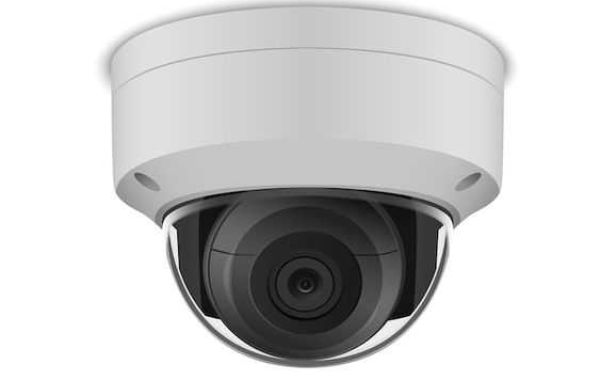In today’s business environment, the implementation of surveillance cameras in offices has become increasingly common. As companies prioritize security, efficiency, and employee safety, office surveillance cameras play a crucial role in achieving these objectives. This article explores the benefits of installing surveillance systems in office settings, their applications, potential challenges, and best practices for effective implementation.
Importance of Office Surveillance Cameras
Deterrence of Theft and Vandalism: One of the primary benefits of surveillance cameras in the workplace is their ability to deter theft and vandalism. The presence of visible cameras can discourage potential offenders, including both external intruders and internal employees, from engaging in dishonest activities. This leads to a reduction in incidents of theft, property damage, and unauthorized access.
Enhanced Security for Employees: Office surveillance cameras contribute to a safer work environment for employees. They can monitor access points, common areas, and parking lots, helping to ensure that employees feel secure while at work. In the event of an emergency or threat, having surveillance footage can provide crucial information for law enforcement and emergency responders.
Monitoring Employee Productivity: While the primary focus of surveillance cameras is security, they can also be utilized to monitor employee productivity. Managers can gain insights into work patterns, ensuring that employees are engaged in their tasks and utilizing their time effectively. However, this use of surveillance should be approached with caution and transparency to maintain trust and morale.
Evidence Collection: In cases of disputes, misconduct, or accidents, surveillance footage serves as valuable evidence. It can help resolve conflicts between employees, provide clarity in harassment claims, and support investigations into workplace incidents. Having recorded evidence can be crucial for legal protection and compliance.
Remote Monitoring: Modern surveillance systems often come equipped with remote monitoring capabilities, allowing managers to view live feeds from cameras via smartphones or computers. This feature enables business owners to keep an eye on operations, even when they are not physically present in the office, providing peace of mind and ensuring business continuity.
Applications of Office Surveillance Cameras
Surveillance cameras in offices can be deployed in various locations and for different purposes, including:
Entry Points: Installing cameras at entrances and exits helps monitor who enters and leaves the premises. This enhances access control and allows for tracking of visitors and employees.
Common Areas: Cameras in break rooms, kitchens, and reception areas can help maintain safety and monitor interactions among employees and visitors. These areas often see a lot of foot traffic, making them critical points for observation.
Parking Lots: Monitoring parking areas ensures the safety of employees’ vehicles and discourages vandalism or theft. Cameras in parking lots also enhance overall security for those arriving or leaving the office.
Server Rooms and Sensitive Areas: Surveillance cameras in areas housing sensitive information or equipment can help prevent unauthorized access and ensure compliance with security protocols.
Challenges and Considerations
While office surveillance cameras offer numerous benefits, there are challenges and ethical considerations that organizations must address:
Privacy Concerns: Employees may feel uncomfortable or uneasy knowing they are being monitored. It is essential to strike a balance between security needs and respecting employee privacy. Organizations should establish clear policies regarding surveillance practices and communicate these to all employees.
Legal Compliance: Different countries and regions have specific laws and regulations governing surveillance in the workplace. Organizations must ensure compliance with these laws, including notifying employees about the presence of cameras and their intended use.
Data Security: The footage captured by surveillance cameras can contain sensitive information. Organizations must implement robust data security measures to prevent unauthorized access and ensure that footage is stored securely.
Resource Allocation: Implementing and maintaining a surveillance system requires financial resources and personnel training. Organizations must allocate adequate funds for installation, maintenance, and regular upgrades to ensure the effectiveness of the surveillance system.
Best Practices for Implementation
To maximize the benefits of office surveillance cameras while addressing potential challenges, organizations should consider the following best practices:
Develop a Clear Policy: Establish a comprehensive surveillance policy that outlines the purpose of cameras, areas being monitored, and how footage will be used and stored. Communicate this policy to all employees to foster transparency and trust.
Choose Appropriate Locations: Strategically select camera locations to cover critical areas while minimizing invasion of privacy. Avoid placing cameras in areas where employees have a reasonable expectation of privacy, such as restrooms and changing rooms.
Invest in Quality Equipment: Choose high-quality cameras that provide clear images and reliable performance. Consider features such as night vision, motion detection, and remote access to enhance the effectiveness of the surveillance system.
Train Staff: Ensure that staff members responsible for monitoring and managing the surveillance system receive proper training. This includes understanding legal requirements, handling footage, and responding to incidents appropriately.
Regularly Review Footage: Implement a routine for reviewing surveillance footage to ensure that the system is functioning correctly and that any incidents are addressed promptly.
Conclusion
Office surveillance cameras have become a vital component of modern workplace security. By deterring theft, enhancing employee safety, and providing valuable evidence in disputes, these systems contribute significantly to creating a secure and productive work environment. However, organizations must navigate privacy concerns, legal compliance, and data security challenges to ensure that surveillance practices are ethical and effective. By implementing best practices and fostering open communication with employees, businesses can maximize the benefits of office surveillance while maintaining a positive workplace culture.







